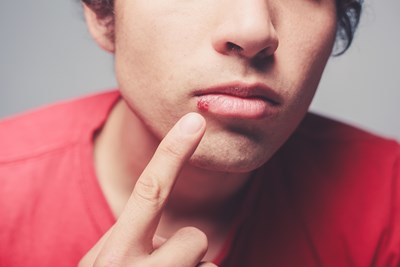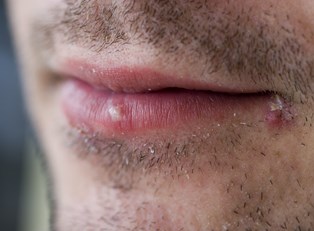Cold Sores Information
Herpes (better known as cold sores or fever blisters) has been known to doctors for over 2000 years. The term "herpes" comes from the Greek word meaning "to crawl". It was described by the Roman doctor Herodotus back in 100 BC. The herpes viruses are well-spread amongst the human population; and they are capable of affecting all organs and systems of the host, causing latent, acute or chronic forms of infection. After the infection, the virus stays in a person's body for the remainder of their life; hence cold sores treatment with eradication of fever blisters is non-existent. It has to do with the fact that the immune system fights only the active virus, and apart from the acute form, the defense reaction does not develop. The herpes virus is especially dangerous in the course of pregnancy, which can cause pathologies in the fetus. There are two forms of fever blisters; oral and genital. The oral type appears in the area of one's mouth, and genitals, in the crotch area. The herpes viruses induces the processes of atherosclerosis, displaying malignant, and at times even fatal, influences on the pregnancy and delivery, pathology of the fetus and infants. Cold sores may at times, depending on one's immune system, be the co-factors of the progression of HIV infection and AIDS. The virus is usually transferred by means of contact with the diseased or the virus carrier.
Cold Sores Symptoms
Cold sores symptoms emerge suddenly and begin with chills and high fever, also accompanied by strong headaches, meningeal symptoms , nausea, vomiting and sometimes dullness of consciousness and delirium. Quite often it may result in muscle pains, reddening of the conjunctiva (the mucous membrane of the eye), swelling and painfulness of the lymph nodes. Visually it appears in the form of boils or blisters (hence the term "fever blisters") in and about the oral cavity or around the genitals. At first, the content of the boils is transparent, but in time it becomes darker. Then it bursts open and in two to three days it is covered with crust, which should be scratched or torn. The areas affected experience itching. The healing takes some time, 1 to 3 weeks may pass before cold sores are completely gone. It may further cause complications, however, that spread to the eyes, (which may even cause blindness on account of aglia), nervous system and internal organs.
Cold Sores Treatment
Largely, cold sores treatment depends on the area infected, but generally it follows the same route. Having spotted the aforementioned symptoms, one needs to inform a doctor who may further prescribe appropriate cold sores treatment. In order to stop the spread to other areas, one needs to locally apply creams and gels containing antivirus medicine (such acyclovir). Applying this type of cold sores treatment early on may even prevent the emergence of fever blisters. But even if that stage is missed, applying it locally will still cause faster healing. Other cold sores treatment suggestions that need to be observed have more to do with precautions for further spread of cold sores, such as personal hygiene, and no kissing. If the relapse of cold sores is more often than two to three times a year (usually caused by catching cold), measures need to be taken to strengthen one's immune system and provide more thorough cold sores treatment in accordance with the prescriptions of the specialist. More frequent outbreaks of fever blisters may be caused by the weakening of the body, which in turn is caused by some other developing disease.



